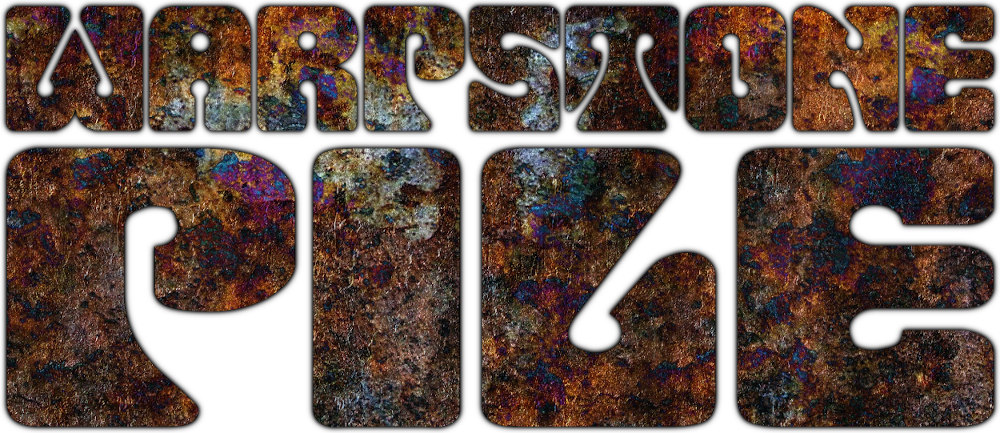I’ve got several friends who are in various stages of getting to the hobby. This is wonderful. It also means that they’ve got a lot of questions about what they need to buy and how they do stuff… that sort of thing. Although I could harumph about how often I’ve had to repeat myself, just writing up everything in a single place I can easily point folks to would be both more sincere (because I love talking about this stuff, so the most I could manage is good-natured harumphing) and useful (to them, when I’m not around).
I expect I’ll add to this article as things occur to me, rather than supplement it with existing articles. I’ve structured things based on the lifecycle of a model, from sprue to finished dude.
Preparation & Assembly
Tools
- X-acto Knife – Go ahead and buy the blades in bulk
. Dull blades suck and are a little dangerous.
- Hobby Files – Look at the GW ones. You can go with whatever brand you want, but these are types of files you need. Round, triangle, flat.
- Hobby Clippers – Hobby clippers are not the same as small wire cutters. They have a completely flat edge on one side. Having a decent set of these is key.
- Small Wire Cutters – Because you’ll eventually want to clip things that will wreck your hobby clippers (wire, brass rod, paper clips). That’s what these are for.
- Seam Scraper / Burr Remover – This is a relatively new tool for me; people started talking about these just within the past year or so. It’s also somewhat optional. It’s unbelievably useful, and will save you a billion X-acto blades. I’d absolutely recommend picking one up. I got mine (a “seam scraper“) from Micromark.
- Superglue – This comes in a billion forms. I prefer Krazy Glue with a brush
, because I think it’s easier to apply and less messy to maintain… but that’s just preference. You’ll use this for metal pieces and to glue basing stuff down.
- Plastic Glue – I recommend this brand; it lasts forever, has a great hold and has a fantastic applicator. Styrene cement is very different from superglue: it doesn’t so much glue as fuse two pieces of styrene plastic together. This is what you’ll actually use to glue your plastic models together.
The actual process of assembly’s not hard, it just takes a lot of patience.
Use the clippers to snip the bits off the sprue (plastic models) and flash off the model (metal models). Eyeball the model and try to find the seam: the line of extra material that indicates where the two pieces of the mold met. Using the seam scraper, files and hobby knife, do your best to smooth that line away as well as to smooth out where clipped stuff off the sprue. It’s easy to miss this stuff (especially with metal models), but is important: the better your paint job, the worse these will look.
If you’re working with a metal model, you’ll probably want to consider pinning it together. I hate pinning, but I hate my models falling apart even more. There’s a great step-by-step on how to do this on Dakka. It might seem like a lot of hassle (it is), but it’s worth it.
Priming
- Primer – I use grey Duplicolor Sandable Primer. Avoid GW “primer.”
- Blu-Tack – You don’t need a whole lot, just a little.
- Dishwashing gloves.
Before you paint yours stuff you need to prime it to give the paint something to adhere to. I’ve been told that priming is optional with plastic minis, but I just go ahead and prime everything.
Color’s significant: using white primer will result in brighter, more vibrant colors. Black primer will be more forgiving when it comes to missed spots (it happens). I use grey because it’s a nice middle ground.
The blu-tack is if you’re priming and painting sub-assemblies: cover any contact points with blu-tack. That’ll ensure that, when you’re done and putting everything together you’re gluing part to part and not paint to paint.
Actual technique is something I find difficult to articulate. Aim for quick passes and short bursts of spray. Distance depends on the brand of primer, but farther away is better than up close: so start farther away and work your way in as you get a feel for how the primer behaves.
Some people like to use a spray stick (a broomstick or somesuch that they blu-tack minis onto), but I prefer to put on a dishwashing glove and just hold the mini while spraying it. The key is being able to get all angles, just just the top of the mini.
Painting
Varnishing
Transporting




















